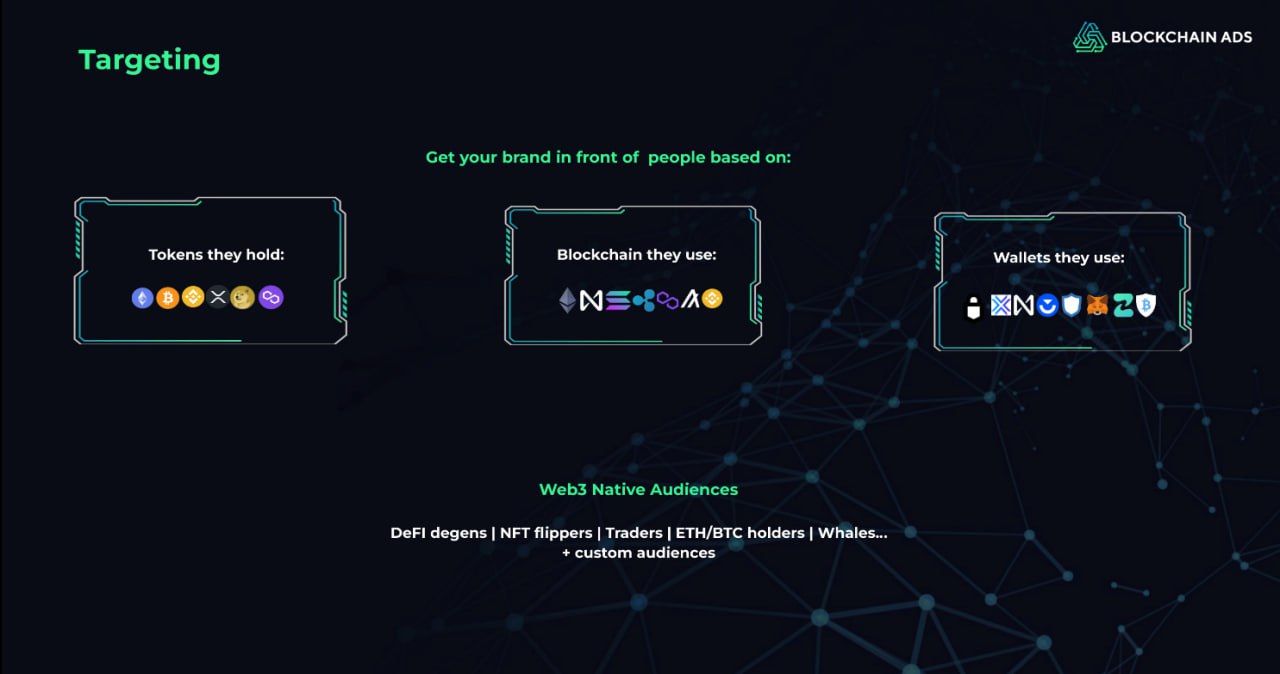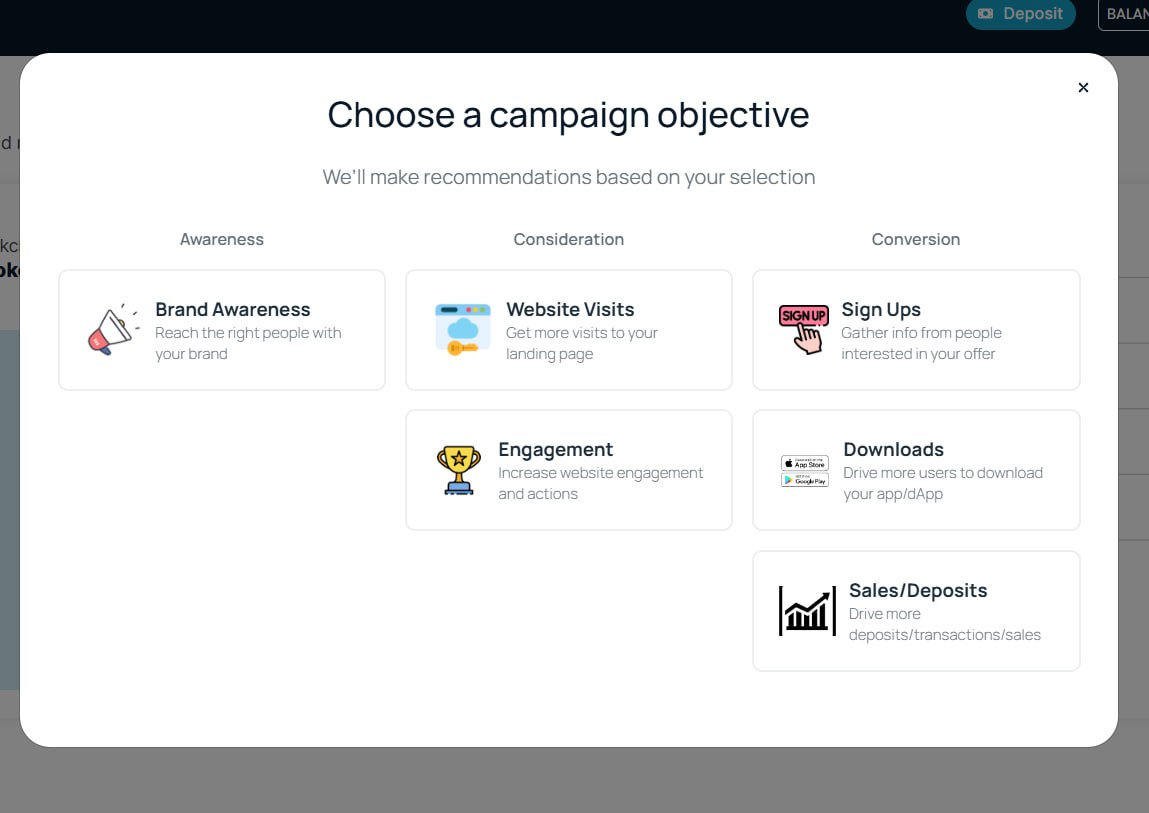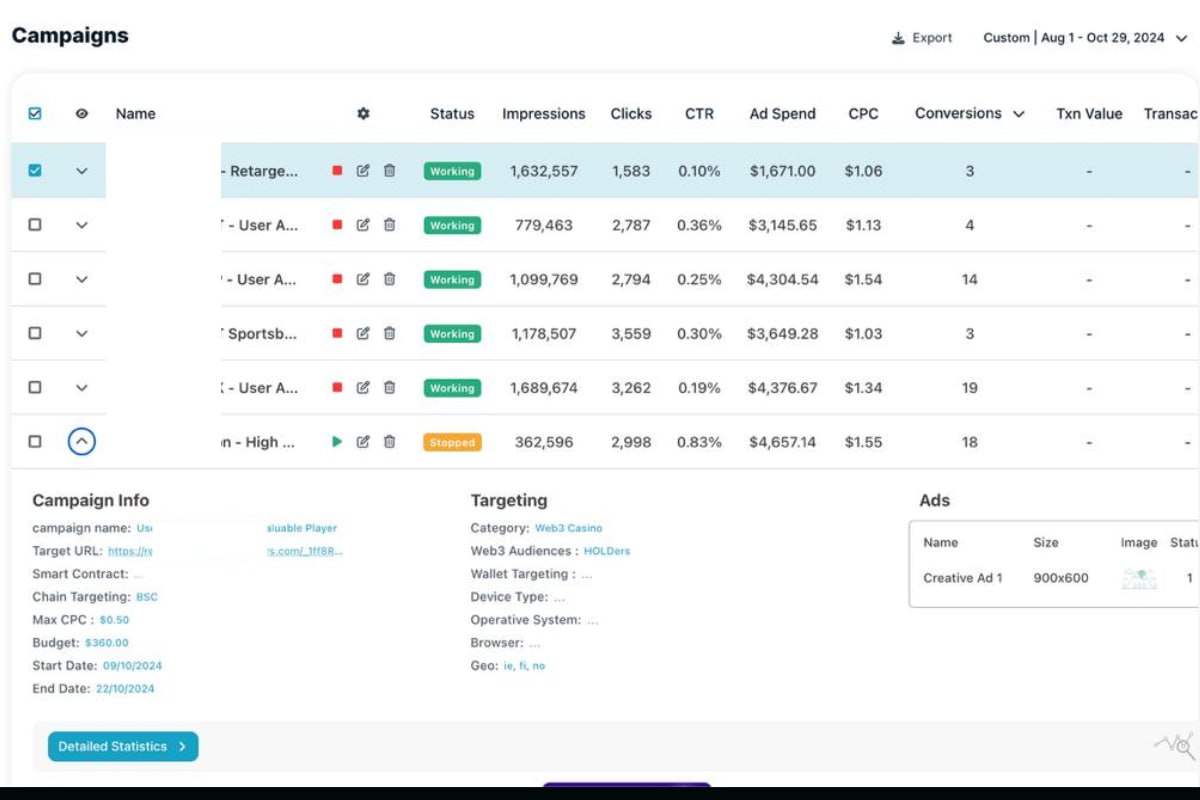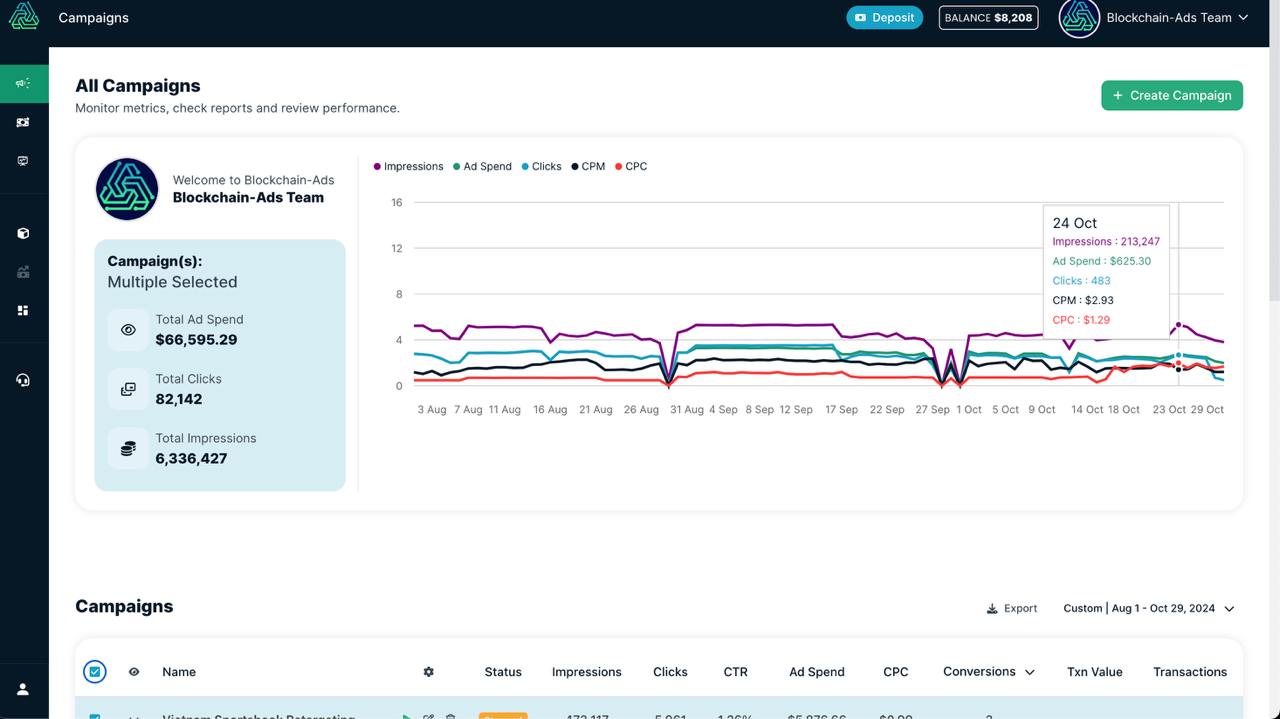Blockchain-Ads has established itself as a premium ad network designed specifically for companies supporting crypto payments. Trusted by major brands across industries, Blockchain-Ads enables targeted campaigns for businesses looking to reach an engaged crypto audience.
But does it live up to the hype? Here’s an overview.
What Makes Blockchain-Ads Different?
Blockchain-Ads stands out for its Web3 Cookie targeting technology, which leverages users’ on-chain behavior to deliver highly specific ads. Advertisers can segment audiences based on:
- Blockchains they interact with
- Wallets they own
- Tokens in their portfolios

Other options, such as portfolio balance and competitor smart contracts, allow for even more detailed targeting. With 9,000 publisher websites and a capacity for 6 billion ad impressions per day, Blockchain-Ads offers broad and deep reach for advertisers.
How Does Blockchain-Ads Work?
Blockchain-Ads operates on a self-service platform, allowing advertisers to launch campaigns after an initial qualification call and account setup. Campaign setup is straightforward and can be completed in just a few minutes, with objectives grouped into:
- Awareness
- Consideration
- Conversion

Advertisers can choose to set up their campaigns independently or opt for a managed service through the Blockchain-Ads media team.
The platform also provides a dedicated analytics dashboard with its own pixel for tracking campaign performance and conversions.

Who Uses Blockchain-Ads?
Blockchain-Ads is widely used by brands from various industries that have enabled crypto payments, attracting major names like Binance, OKX, and Coinbase.
Additionally, 50+ certified marketing agencies manage campaigns on the platform, including both traditional agencies and specialized Web3 agencies such as AlphaGrowth, SocialKick, and LeanMarketing-Crypto.
Pricing and Plans
According to live stats, advertisers on Blockchain-Ads spend an average of $40K-$50K per month, making it best suited for companies with significant marketing budgets.

The platform supports both CPC (Cost Per Click) and CPM (Cost Per Mille) pricing models.
Pros and Cons of Blockchain-Ads
Here are some key advantages and potential drawbacks:
Pros:
- Unique on-chain behavior and wallet targeting capabilities
- Pre-built retargeting and lookalike audiences
- Performance improves as more data is collected
Cons:
- Platform UI/UX could be improved for ease of use, especially compared to Google Ads
- Primarily suited for large-scale advertisers with high budgets
- New users may face a learning curve with Web3 targeting capabilities
How Does Blockchain-Ads Compare?
| Ad Platform | Type | Targeting Capabilities |
| Blockchain-Ads | Programmatic | On-chain profiling, Web3 targeting, audience recommendations |
| Google Ads | Programmatic/intent | Search, display, contextual targeting |
| Taboola | Programmatic | Content recommendation, audience targeting |
| Bitmedia | Contextual | Geo-targeting, website-based targeting |
Compared to competitors like Google Ads, Taboola, and Bitmedia, Blockchain-Ads stands out with its unique blockchain-specific targeting options and extensive on-chain data. However, ad networks like Bitmedia may be more accessible for smaller advertisers.
Conclusion
Blockchain-Ads offers a compelling solution for advertisers aiming to connect with a highly engaged audience. While there’s room for improvement in the user experience, its sophisticated targeting capabilities and substantial reach make it an excellent choice for large-scale campaigns. For serious advertisers, Blockchain-Ads is a strong contender worth considering.
Stay informed with daily updates from Blockchain Magazine on Google News. Click here to follow us and mark as favorite: [Blockchain Magazine on Google News].
Disclaimer: Any post shared by a third-party agency are sponsored and Blockchain Magazine has no views on any such posts. The views and opinions expressed in this post are those of the clients and do not necessarily reflect the official policy or position of Blockchain Magazine. The information provided in this post is for informational purposes only and should not be considered as financial, investment, or professional advice. Blockchain Magazine does not endorse or promote any specific products, services, or companies mentioned in this posts. Readers are encouraged to conduct their own research and consult with a qualified professional before making any financial decisions.

 Bitcoin
Bitcoin  Ethereum
Ethereum  XRP
XRP  Tether
Tether  Solana
Solana  Dogecoin
Dogecoin  USDC
USDC  Cardano
Cardano  Lido Staked Ether
Lido Staked Ether  TRON
TRON  Chainlink
Chainlink  Avalanche
Avalanche  Wrapped stETH
Wrapped stETH  Stellar
Stellar  Wrapped Bitcoin
Wrapped Bitcoin  Sui
Sui  Hedera
Hedera  Toncoin
Toncoin  Shiba Inu
Shiba Inu  WETH
WETH  Polkadot
Polkadot  Parkcoin
Parkcoin  LEO Token
LEO Token  Litecoin
Litecoin  Bitget Token
Bitget Token  Bitcoin Cash
Bitcoin Cash  Uniswap
Uniswap  Official Trump
Official Trump  Hyperliquid
Hyperliquid  Wrapped eETH
Wrapped eETH  Pepe
Pepe  USDS
USDS  NEAR Protocol
NEAR Protocol  Ethena USDe
Ethena USDe  Aave
Aave  Aptos
Aptos  Internet Computer
Internet Computer  Ondo
Ondo  WhiteBIT Coin
WhiteBIT Coin  Ethereum Classic
Ethereum Classic  Monero
Monero  POL (ex-MATIC)
POL (ex-MATIC)  Cronos
Cronos  OKB
OKB  Mantle
Mantle  Dai
Dai  Algorand
Algorand  Render
Render 